The freshness of early summer may be over and the gardens are tinged with maturity but late summer blooms are preparing to take over with cosmos peeking through the phlox and acanthus along the white wall border. There is plenty to distract attention while cutting back foliage, weeding and pruning along the borders; bumblebees crawling into the depths of the acanthus flowers, the heady scent wafting from the jasmine, and a spectacular second flowering of the wisteria.
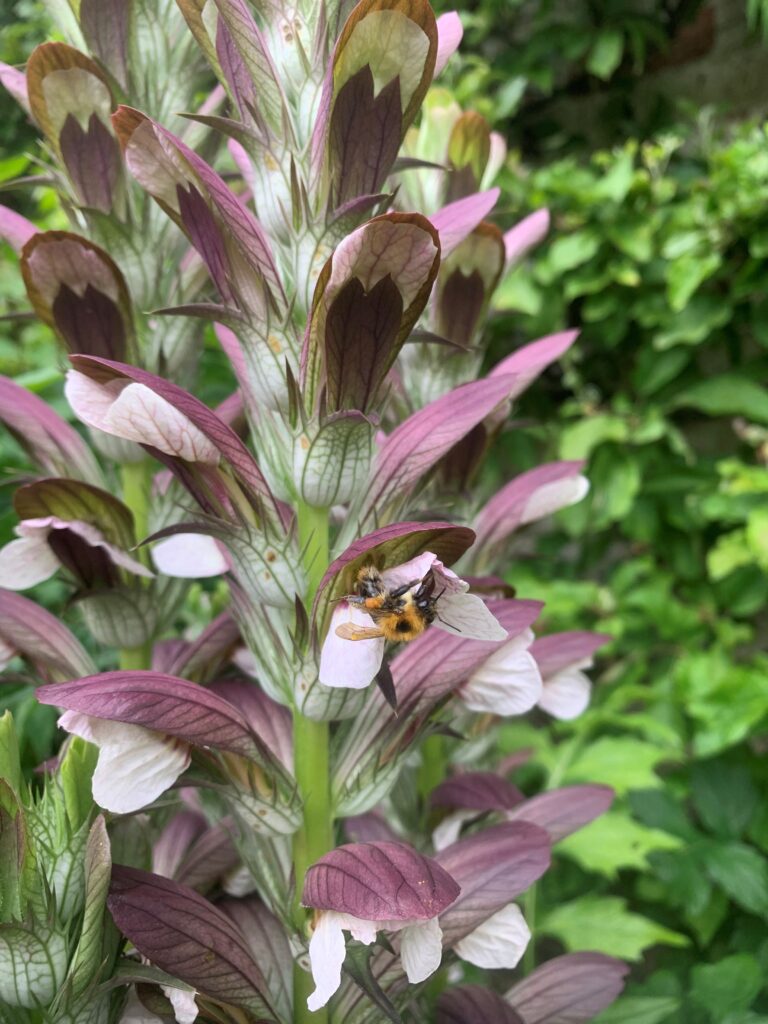
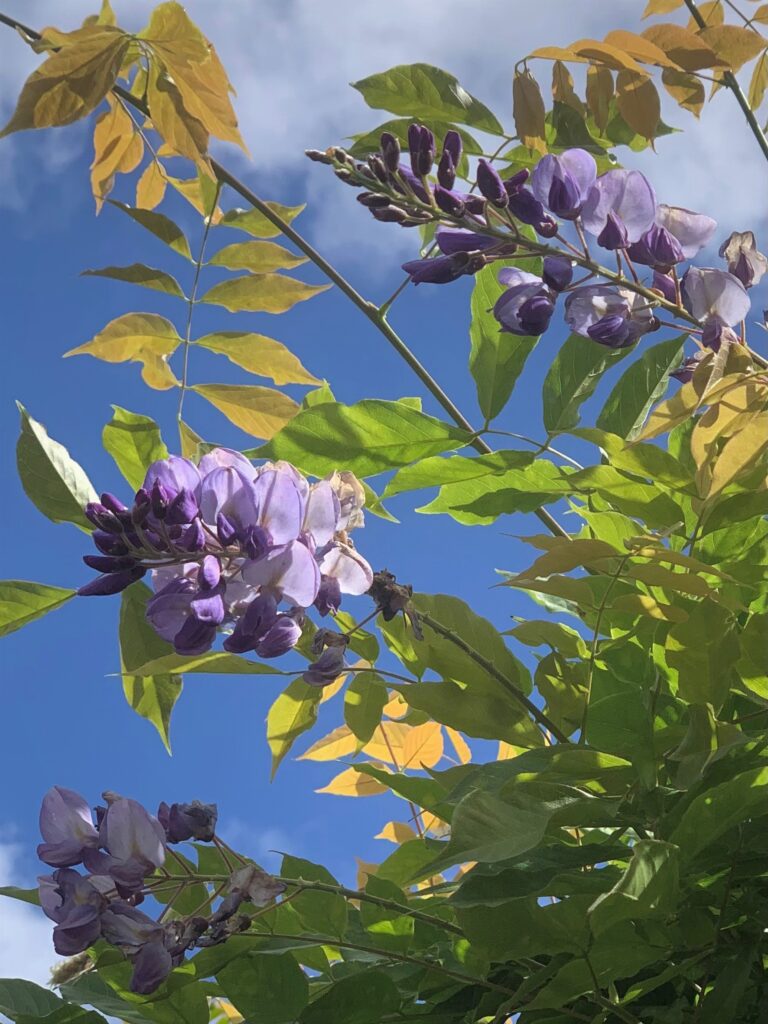
Updates from our kitchen garden
We continue to harvest vegetables, salads and herbs from the potager and herb borders. Slugs have enjoyed feasting on many of our cauliflowers but the surviving one was carefully picked and divided between volunteers!
Our greenhouse is bursting with tomatoes of every colour shape and size: green zebra, black cherry, yellow pear, orange burst, tigerella and a classic gardeners delight. Aubergines and cucumbers are ripening and a fig or two have been shared at tea break
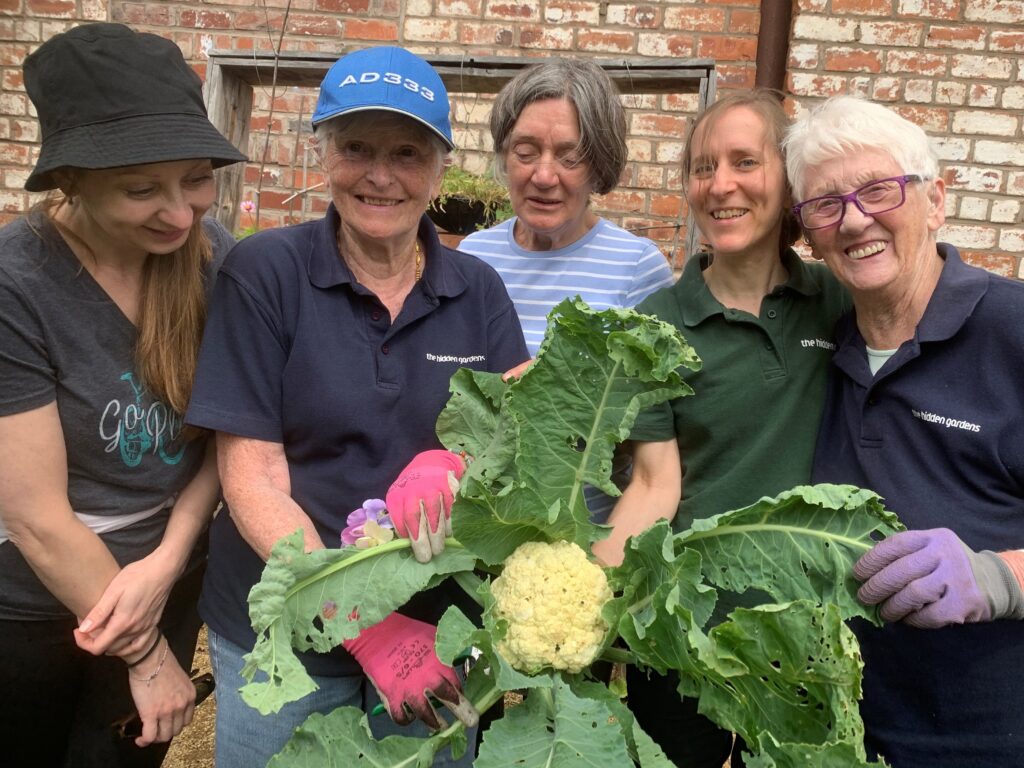
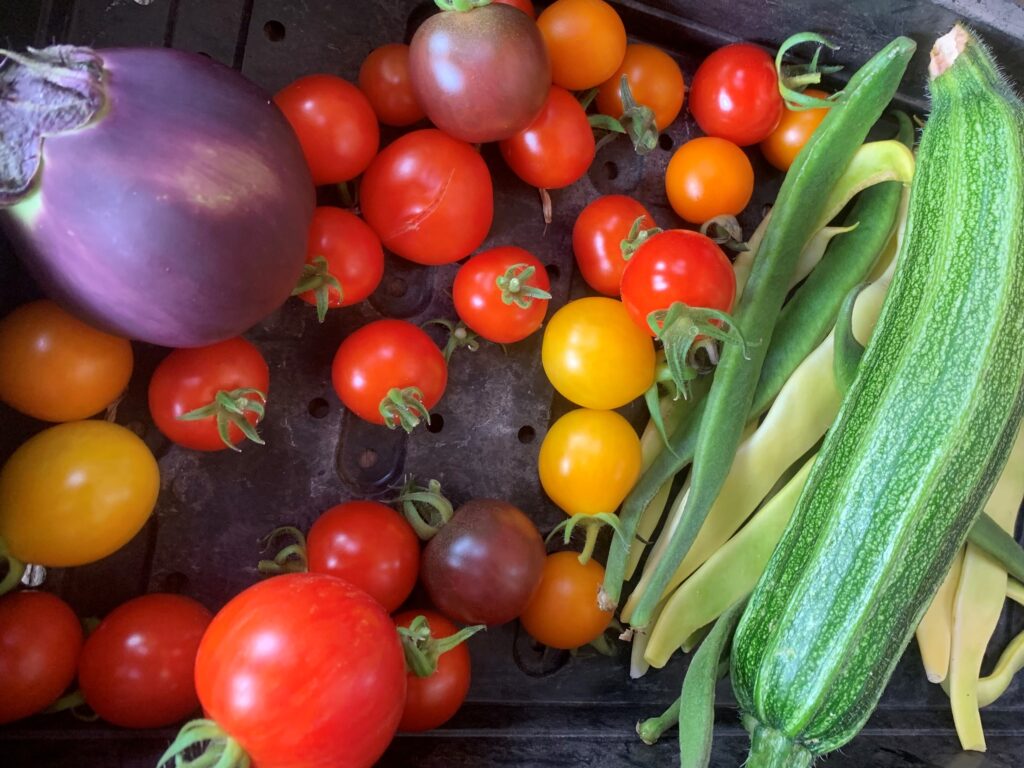
To make sure all the green tomatoes fully ripen over the coming months now is the time to cut the bottom leaves on each plant. This will let in light and air so the fruit get more sun-light and the ventilation reduces the risk of disease. As the month progresses more leaves can be removed. We will continue with a weekly seaweed or comfrey feed to maximise flower and fruit production, and water regularly to prevent blossom end rot – a blackening at the tip of the fruit caused by calcium deficiency due to irregular watering
Gardening Tips
Gardening need not be a costly undertaking; there are many ways to enjoy a beautiful garden while spending little or no money. For example, many mature plants can be divided (geraniums, rhubarb, chives), strawberries produce baby plants from runners and these can be potted up, or you can expand your plant collection by taking cuttings. Now is the perfect time for taking semi-ripe cuttings and it’s a deeply satisfying process when successful.
Semi-ripe cuttings are taken from this season’s growth as it starts to harden off. Choose healthy strong straight growth, free from flowers or flower buds. Once you have cut your plant material place them immediately in a polythene bag to stop them drying and pot them up as soon as possible.
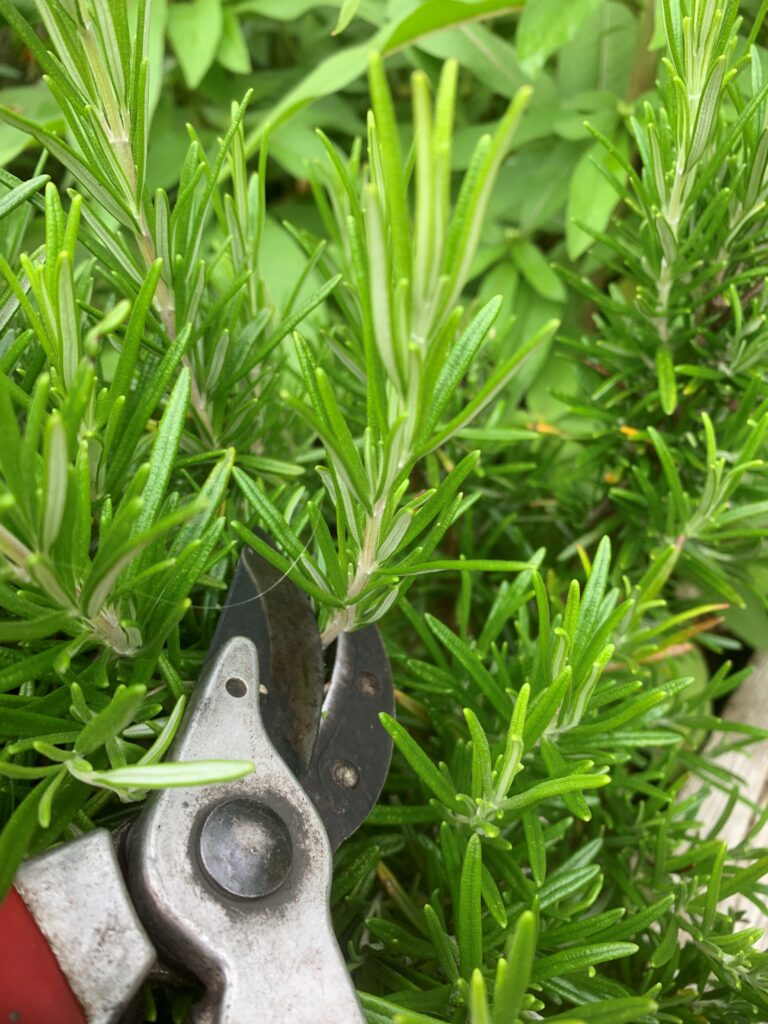
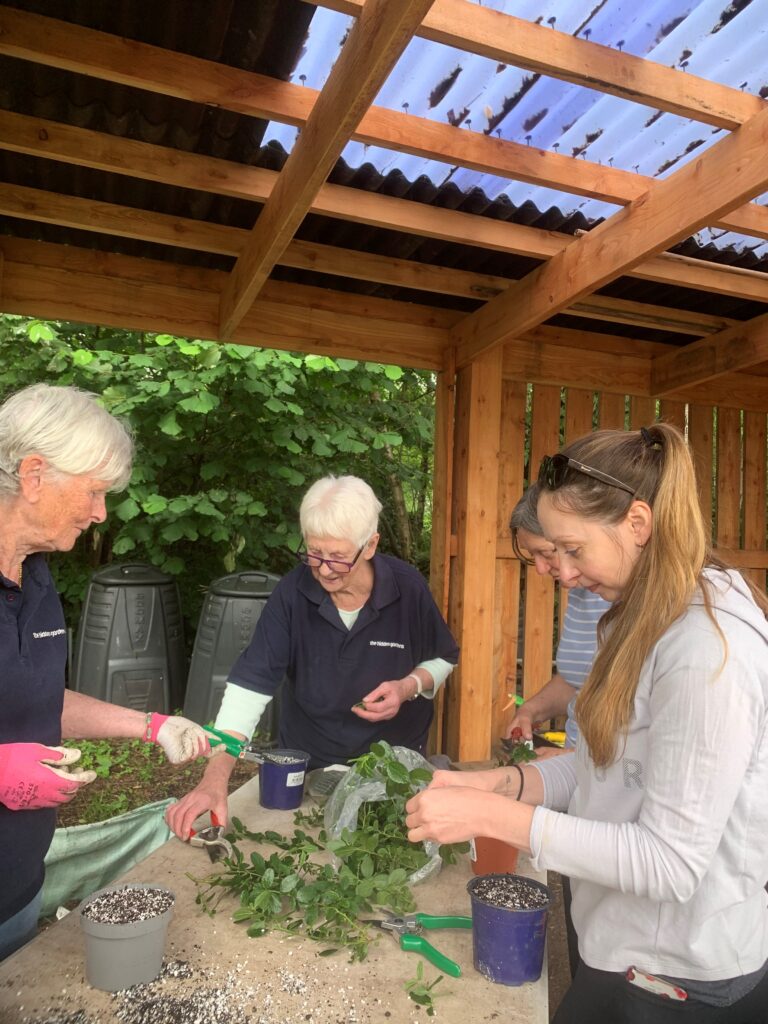
Strip off all the lower leaves and side shoots, and cut the stem with sharp secateurs or a knife, just below a node (the point the leaves join the stem).
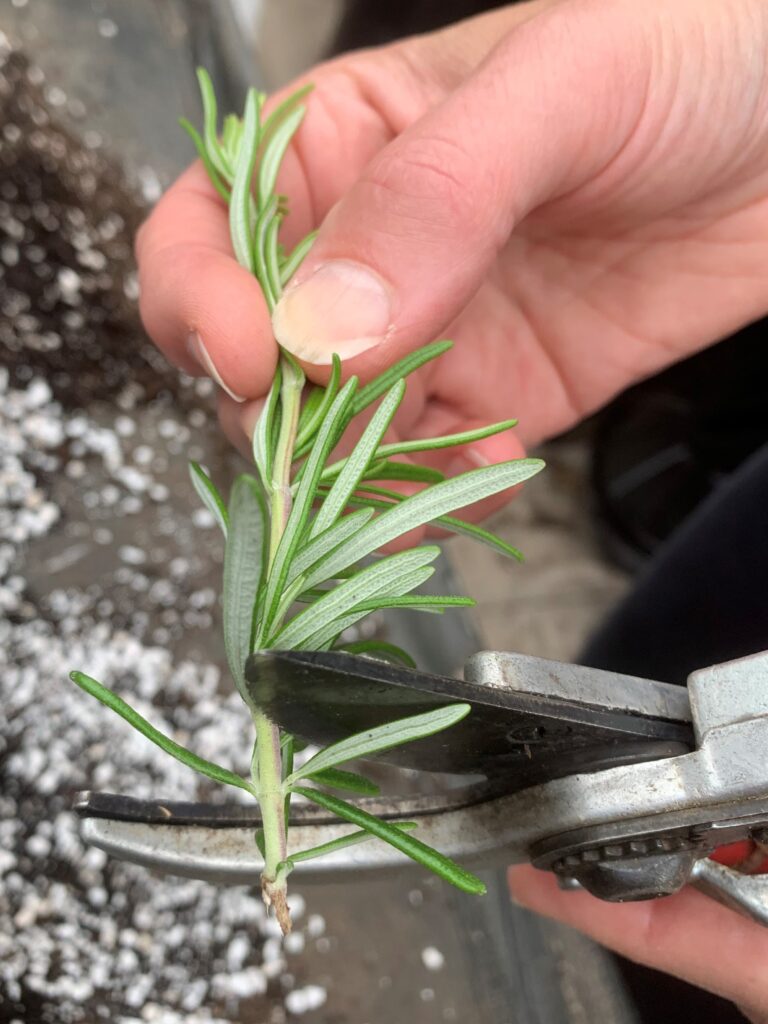
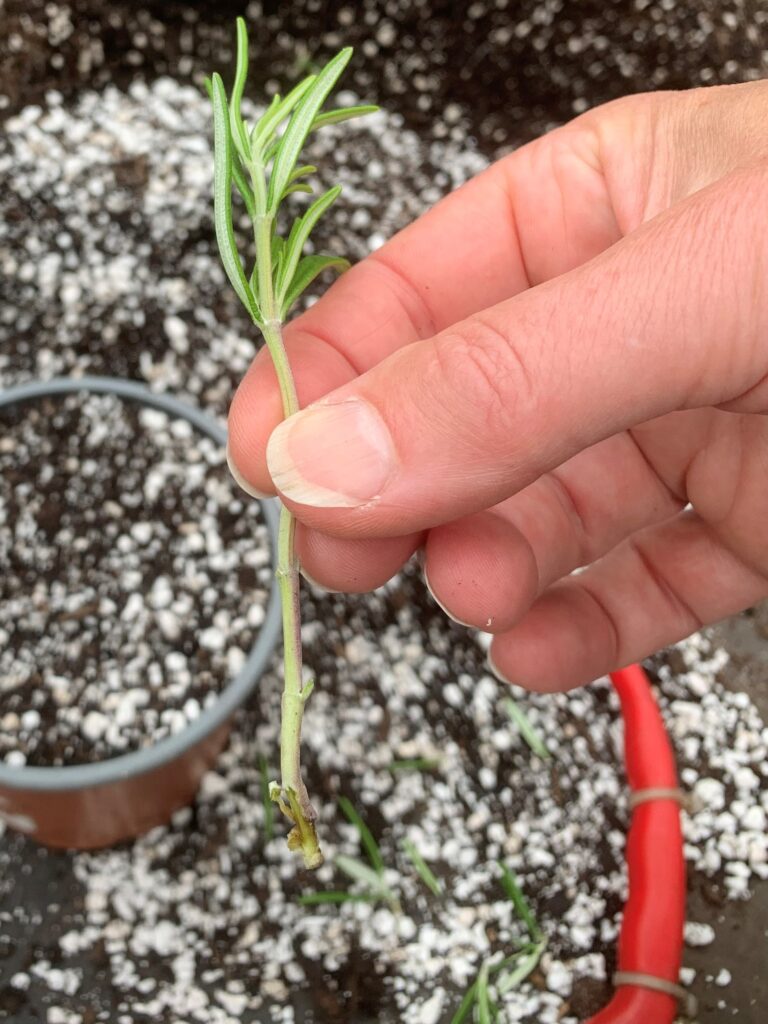
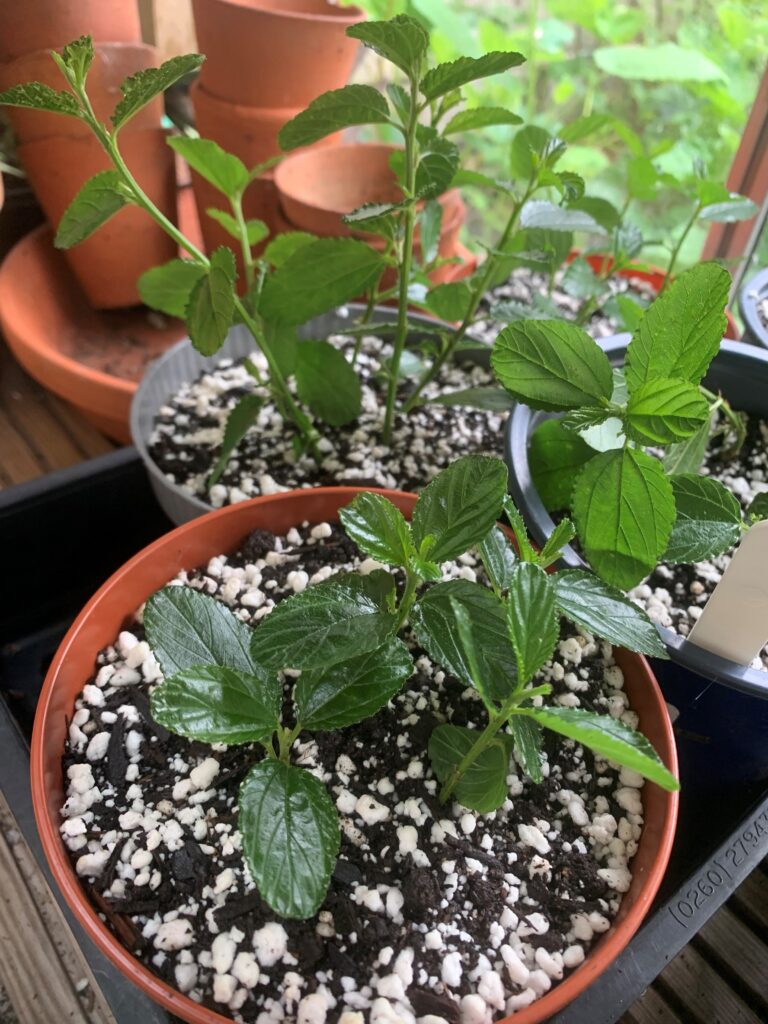
Place around the edge of a pot of gritty compost, or a mix of perlite and compost. To form roots the plant doesn’t need nutrients but does needs oxygen and water so the planting medium needs to be well draining but do not allow it to dry out.
Place somewhere warm and light but not direct sunlight and keep moist. Once you see signs of new growth and roots emerging from the bottom of the pot, maybe 4-6 weeks later, then it will be time to pot on to a more nutritious compost. Plants to try now are salvias, nepeta, rosemary and lavender. Experiment with what you have, give it a go, and enjoy your free plants ready for next year!
Nature Notes
At this time of year the garden birds take time to moult and tend to lay low, singing less to avoid attracting too much attention. However, on our last bird club meeting we were treated to blackcap singing in the trees, our ever curious juvenile robin, and a dunnock enjoying a dusty bath in a sunny spot in the woodland glade. Next bird club will be on Wednesday 16th August at 10am. All welcome, meet at chimney.
Although we have not enjoyed many sunny days in July we have spotted a few butterflies fluttering through the borders. Green-veined, Large and Small Whites, Tortoiseshell, Meadow Brown have all been spotted. The whites can be difficult to distinguish but the key is to look at the underside of the wings, visible when the butterfly is resting. Butterfly conservation has some useful tips here.
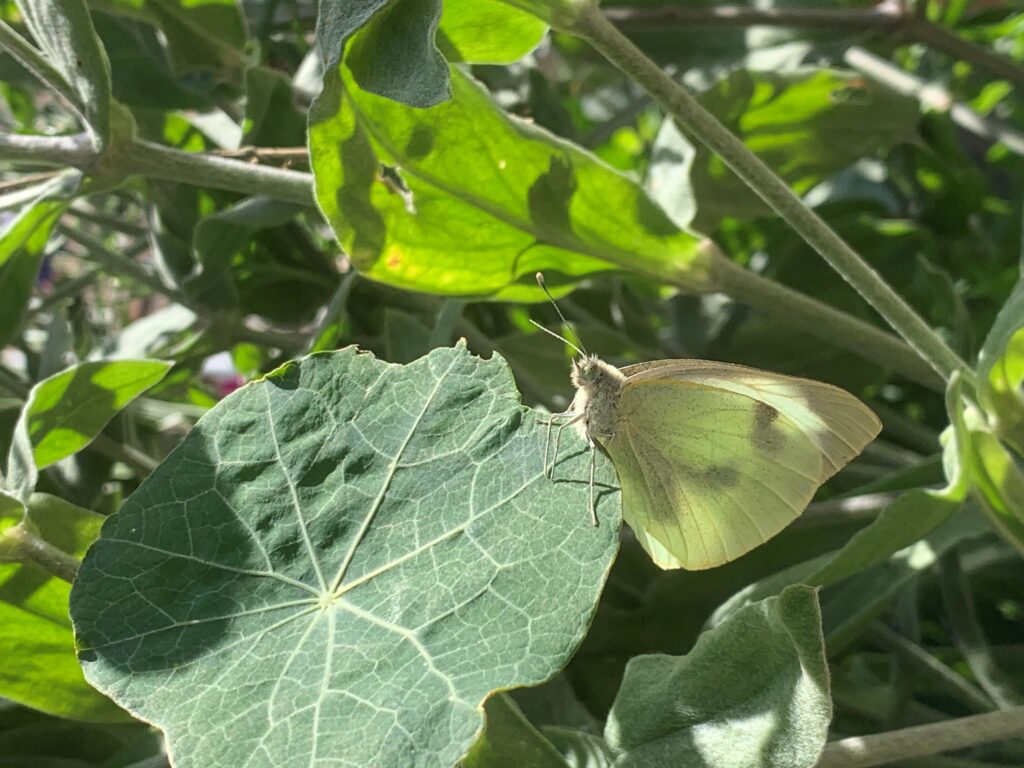
And if you have a spare 15 minutes there is still time to take part in the Big Butterfly Count until 6th August. National surveys like these are an important method of monitoring the health of our butterfly populations and by taking part you are contributing to vital science.

